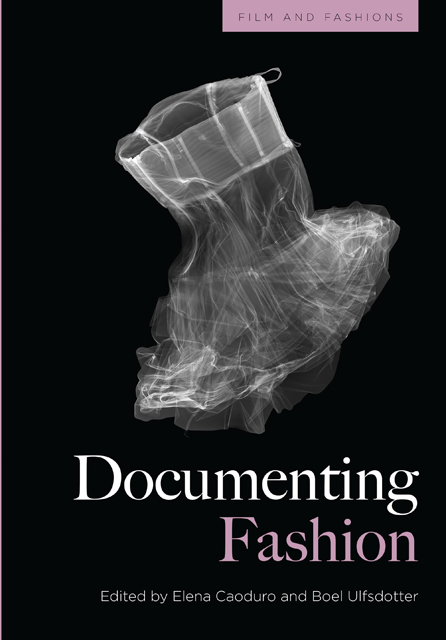7 - Documenting fashion history: television and the temporalities of cultural remembrance
Published online by Cambridge University Press: 20 October 2023
Summary
One day perhaps someone will put on a play in which we shall see a resurrection of those costumes in which our fathers found themselves every bit as fascinating as we do ourselves in our poor garments … And then, if they are worn and given life by intelligent actors and actresses, we shall be astonished at ever having been able to mock them so stupidly. Without losing anything of its ghostly attraction, the past will recover the light and movement of life and will become present. (Baudelaire 2004 [1863]: 38)
It has been some 150 years since Charles Baudelaire, contemplating a set of fashion plates from decades past, mused about the time-crossing potential of a skilfully animated presentation of fashion history. Such a production would, perhaps, conjure the ‘flowing movement’ that ‘[l]iving flesh imparted … to what to us seems so stiff’; ‘It is still possible today,’ the poet and critic claimed, ‘for the spectator's imagination to give a stir and a rustle to this “tunique” or that “schall”’ (Baudelaire 2004 [1863]: 38).
By the 1930s, costume parades of the kind envisioned by Baudelaire had become a popular mode of presenting dress history within a number of European museums, borrowing from the mannequin parades that had become an integral feature of fashion's retail sphere (Hjemdahl 2016). But in 1937, their locus shifted to the television screen in the pioneering six-part programme Clothes-Line. Airing on the BBC's (British Broadcasting Corporation) nascent television service just a year after it had been launched, the series staged live-model parades of (largely) authentic fashions from the 1750s to the 1930s across a vaguely defined period setting. The Victoria and Albert Museum's James Laver – co-creator of the programmes alongside BBC producer Mary Adams and the artist-cum-dress-historian Pearl Binder – provided an eccentric commentary, while Binder produced on-the-spot illustrations at an easel. As a reviewer of the series’ opening episode was eager to point out, Clothes-Line demonstrated an unfamiliar and experimental format for newly inaugurated viewers more accustomed to radio broadcasts, films and pre-recorded newsreels:
When it was over, we were left wondering quite what it was we had just seen and heard – a poetry-reading, a lightning-artist display, a mannequin parade, or what? Actually, it was of course no one of those things but a new sort of television feature borrowing in part from the technique of all three. (The Listener 1937: 733)
- Type
- Chapter
- Information
- Documenting Fashion , pp. 159 - 181Publisher: Edinburgh University PressPrint publication year: 2023



